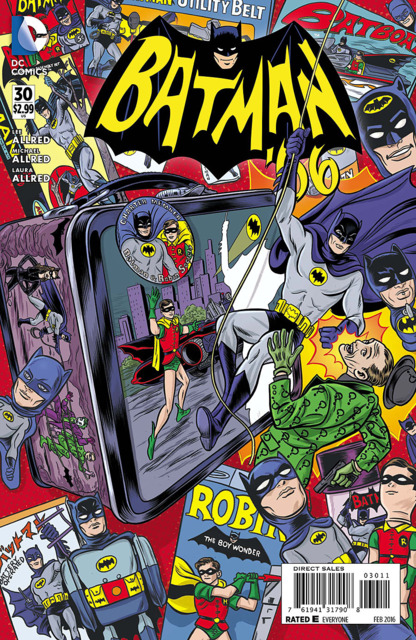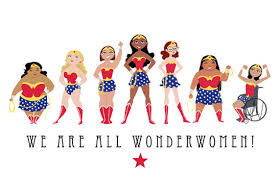Remediating Comics for Cinema: An Interview with Drew Morton (Part Three)
/You use Bolter and Grusin’s concept of remediation but have less to say about their distinction between immediacy and hypermediacy, terms they use to describe both the rhetorical choices and spectator response of different media practices. Might this terms be useful to describe what happens when fans and for that matter, nonfans encounter one of these texts which have become highly stylized as they seek to remediate their sources in comics?
That’s a great question and something I wish I had thought more about when I was writing the book. In many ways, I think the relationship between immediacy and hypermediacy in Bolter and Grusin is perhaps the most difficult concept to grasp (at least that seems to be the case whenever I teach it). The idea that new media layers on additional remediations of old media (hypermediacy) in order to “disappear” before the viewer’s eyes (immediacy) is, as the authors say, paradoxical. The film that ended up helping me grasp the concept was Wall-E. Specifically, there’s a section in that film where he’s in a grocery store and is outrunning some runaway shopping carts. There’s a moment where the camera bobbles, zooms into the distance, goes out of focus, and then rack focuses back into view. Think about that for a moment - this is all computer animation. It is a medium based on being formally precise. Yet, we’ve seen in films like The Last Starfighter that the lack of photography’s imperfections - motion blur for instance - alienate the viewer. So in order to appear “there” for the viewer, computer generated imagery has to remediate the artifacts of the photographic apparatus.
So how does this relate to my topic? I’d hypothesize that a viewer well-versed in comic book visual vocabulary would be less aware of stylistic remediation and the experience of watching a film like Hulk or American Splendor or Dick Tracy would veer towards the immediate end of the spectrum. That viewer knows what a comic book looks like and might assume that a comic book movie can or should look similarly. The uninitiated viewer of 300 - on the other hand - might register the remediations as being self-conscious or foreign. Not necessarily in a negative way, just that they’re more aware of it because they may not have that expectation or visual primer going in. Of course, a lot of this depends on what media these folks are consuming in general and I’d hesitate to make any definitive claims about it without doing further research.
What might we learn about stylistic remediation by discussing, in parallel, the careers of Alan Moore, who has long argued that his comics should not be adapted for the screen, and Frank Miller, who has repeatedly sought to shape cinematic adaptations of his works?
Very broadly, I think the disjunction between Moore and Miller has to do with how we view the relationship between formal vocabularies of two visual media. A lot of filmmakers, executives, journalists - hell, a lot of people in general - view film and comics as being one in the same. “Well, aren’t comic books just storyboards?” Sure, both film and comics are visual media that have certain stylistic norms that - in some ways - overlap and were born from one the same family trees - the graphic arts. But cinema owes a lot to theater (staging in depth, the cinema of attractions) and comics owe a lot to literature. Moore, I think, was always troubled by the equation between the two and the role comics play in “feeding” the more culturally valued medium of cinema. Moore values the comic’s ties to literature and tends to equate cinema to Hollywood and commercialism, which he views as limiting the types of stories he can tell. Miller, on the other hand, often strives to make his comics cinematic and expects his films to reflect that intermingling. From embracing noir visual tropes to a “widescreen” aspect ratio in 300, he does not hesitate in trying to test the limits of those aesthetic points of contact.
But, and I’ll get at this later, that does not mean that the comic panel functions in the same way the filmic frame does. As Scott McCloud says, films are narratives told through time and comics are narratives told through space. One medium is based on subjectivity and caricature, while the other is based upon the photographic apparatus that Andre Bazin saw as being separated from human intervention. So I think if the philosophical difference between Miller and Moore tells us anything, it’s that the formal connective tissue between the two media is relatively superficial and there are some pretty heavy compromises one has to make in order to make a film look like a comic book or a comic book look like a film. Fittingly, as Rorschach once said, “Never compromise. Not even in the face of armageddon.” That seems to be his creator’s artistic credo as well.
You write, “To produce a comic book film without dealing with its unique formal devices is like adapting a musical and neglecting to include the music; it may work but it also fails to realize what is fully unique about the original form.” Can you elaborate on this, especially given your claim elsewhere that comic book adaptations have tended to be more successful when they abandon comic book style for a more cinematic approach?
This gets back to the question of what audience we’re talking about. I think comic book readers - myself included - appreciate the visual imagination of a film adaptation that remediates the style of the comics. Comic art can be beautiful and thrilling - Jack Kirby’s work should be in the collections of most modern art museums (look at those Fantastic Four photocollages!) - and the style of most contemporary action films, especially the house-style of the first couple phases of the Marvel films, is so generic and forgettable. So for fans and readers, I think there is something unique about seeing those remediations on screen.
Yet, as I noted earlier, readers are dwarfed in number by non-readers, so Hollywood is faced with a bit of a quagmire. How do they keep the fans on board without going over budget on comic book transitions and/or alienating a wide audience? There is no doubt that the Marvel films and the Nolan Batman films, adaptations that do not remediate comics, have been extremely successful both financially and with critics. But stylistic remediation is not necessarily an albatross to bear if the costs are kept in perspective - Sin City, 300, and Deadpool - have all shown that it isn’t a kiss of death. Hell, Ang Lee’s baroque Hulk film cost and made almost the same amount as its rather generic followup The Incredible Hulk.
You discuss throughout the ways that transmedia style is shaped by “the perpetual motion machine of synergistic properties.” So, can you be more precise about the marketability of stylistic remediation?
When we look at examples like Scott Pilgrim and The Matrix, we can see how prevalent their respective styles played in the “high concept” marketing of the films and how they took on their own meaning. In the case of The Matrix, bullet time became a cultural commodity of its own. Movies like Scary Movie and Shrek parodied it. Video game franchises like Max Payne - unaffiliated with The Matrix - attempted to co-opt it as a core game mechanic. Commercial directors cribbed from it. Players of Enter the Matrix wanted to experience bullet time for themselves.
In the case of Scott Pilgrim, Universal attempted to use Bryan Lee O’Malley’s aesthetic gumbo of video games, manga, and music to make its tie-in content seem more organic. The best example of this is how Edgar Wright utilized the 8-bit rendering of the main character that Scott Pilgrim game designer Paul Robertson produced in the film (8-bit Scott appears as the one-up icon during the climax and makes a second appearance in a post-credits tag). This design work was the basis for the tie-in game, which notably does not take its aesthetic cues from the film but the comic and the games the inspired it. Then, it came back around when Oni Press repackaged the comics as a box set - complete with a beautiful 8-bit sleeve designed by Robertson. Essentially, that style spread across the different platforms as a visual hook that solidified their branding. I make a similar case for how Warner Bros. used the unique design of Heath Ledger’s Joker - specifically his “Glasgow grin” - as featured iconography in DC Comics leading up and following the success of The Dark Knight.
Dr. Drew Morton is an Assistant Professor of Mass Communication at Texas A&M University-Texarkana and the co-editor of [in]Transition, the first peer-reviewed journal focused on videographic criticism. He is also the author of the book Panel to the Frame: Style, American Comics, and Blockbuster Film.








